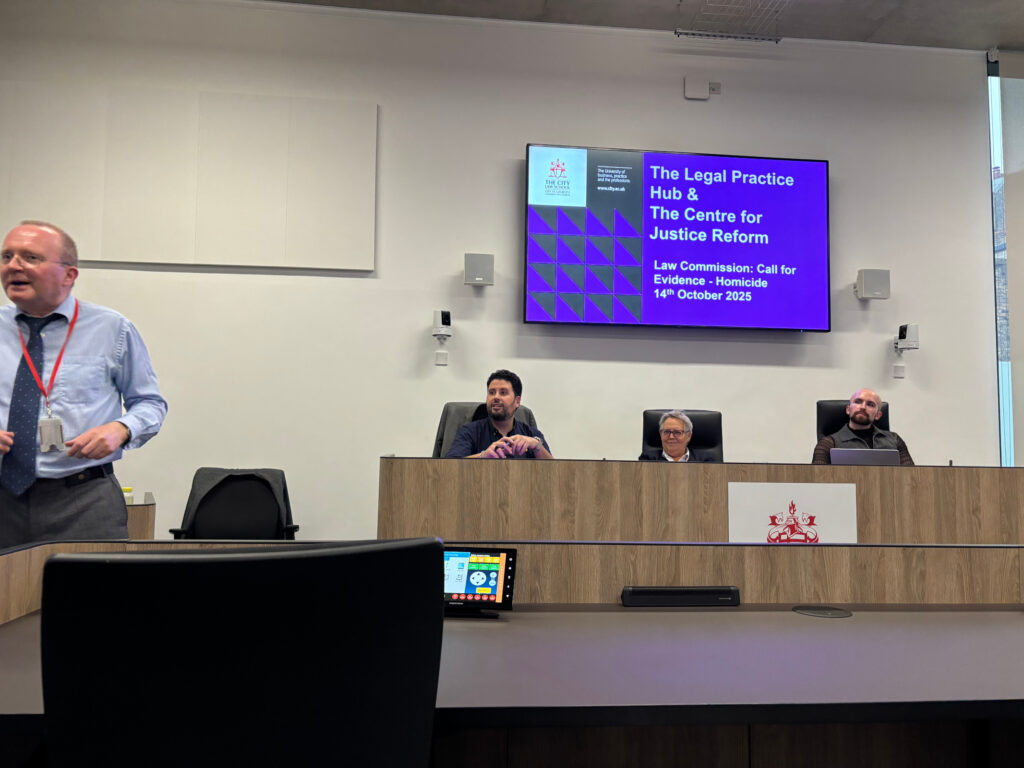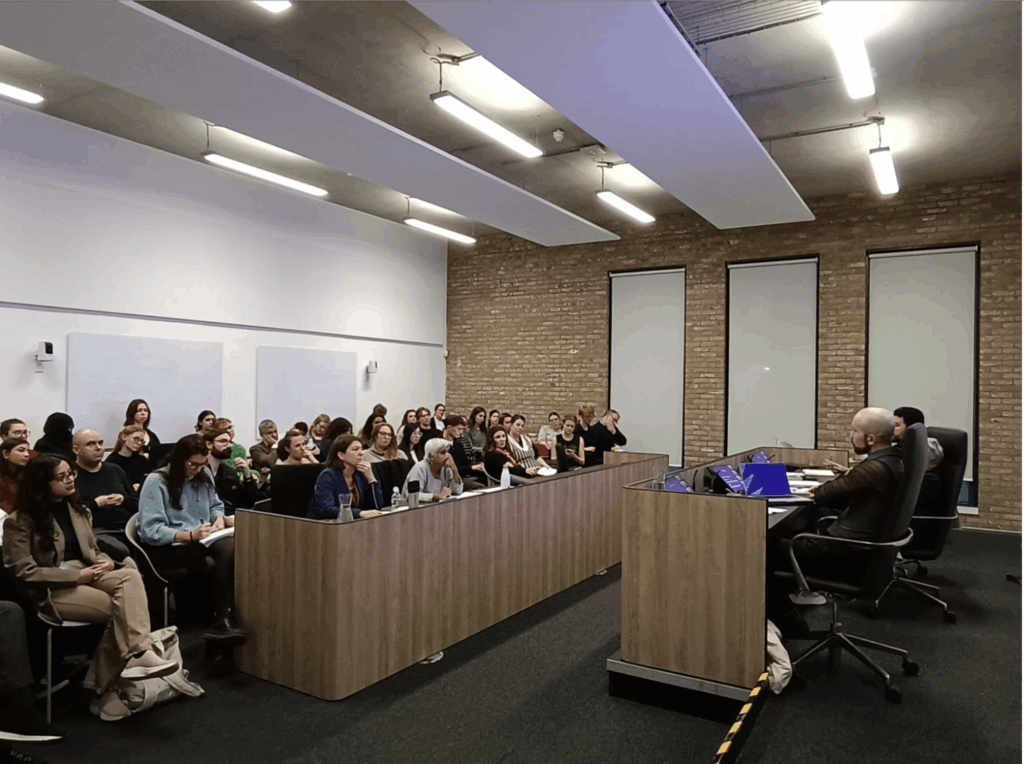Event Review: Reforming the Law of Homicide
“If I knew what was going to happen, I would have let him kill me”.
This harrowing line, spoken by a survivor of domestic abuse in a short film by the Centre for Women’s Justice (CWJ), captures the paradox faced by many women trapped in violent relationships, and how the criminal justice system fails them. This woman, who killed her abuser following years of physical and psychological abuse, was convicted of murder and sentenced to life imprisonment. Her experience is far from unique – survivors of domestic abuse make up 60% of the female prison population, but the true figure is likely much higher.

This was one of many issues raised at a panel discussion in the City Law School on 14th October hosted by the Centre for Justice Reform. The discussion centred around the Law Commission’s upcoming review of homicide law, which examines reform of the current framework for offences, partial defences, and sentencing. The panel featured Dr Andrea Preziosi of the Law Commission, Harriet Wistrich – founder and CEO of the CWJ, and Alex Benn, barrister at Red Lion Chambers and Senior Lecturer in Law at University College, Oxford.
The Law Commission’s review, announced in December 2024, is the first review on homicide in nearly 20 years. Its last report in 2006 proposed reforms to the classification of murder and manslaughter – most of which were not implemented by the Government at the time.
In the two decades since, the problems identified in that review are largely unchanged, and, as society and the law has moved on, new problems and limitations with existing law have emerged. These include the operation of the law of joint enterprise following R v Jogee (2016), and how diminished responsibility should be reflected in any new classification of homicide offences. Other issues include the extent to which the law reflects a modern understanding of the effects of domestic abuse – how do defences to homicide operate where a victim of abuse kills their abuser? What is the criminal culpability where a victim of abuse dies by suicide following this abuse?
Preziozi explained that the review, which opened a call for evidence this summer, will explore whether the current two-tier model of murder and manslaughter is still fit for purpose. A three-tier structure – first and second degree murder, plus manslaughter – is being considered to ensure “fair labelling”; where the charge matches the moral culpability of the defendant, and is more easily understood by the public.

The review also revisits partial defences to murder such as diminished responsibility and loss of control. These defences, though reformed in recent years, have attracted significant criticism. Diminished responsibility (as defined by section 2 of the Homicide Act 1957 and amended by section 52 of the Coroners and Justice Act 2009) provides a partial defence to murder so that if successful, it reduces the offence to manslaughter.
The limitations of diminished responsibility were exposed by the 2023 Nottingham attacks, in which Valdo Calocane – who killed three people in a frenzied knife attack – was convicted of manslaughter on the grounds of diminished responsibility, and was given an indefinite hospital order instead of a jail sentence. The victims’ families were vocal in their criticisms of the sentence, arguing that his conviction did not reflect the seriousness of the offending – an issue the Law Commission believes could be better addressed by reformed gradations of culpability.
Meanwhile, the loss of control defence, designed to replace the outdated defence of “provocation” in the Coroners and Justice Act 2009, often fails abused women. It still hinges on a model of sudden anger, which rarely fits the experiences of women in coercive, abusive relationships. This partial defence fails to acknowledge cumulative fear and psychological entrapment, making the defence nearly impossible for abused women to use successfully in court.
This is reflected in the figures; between 2008 and 2018, 108 men were killed by female partners in England and Wales. Of these, 46 per cent were convicted of manslaughter, 43 per cent of murder, and only seven per cent were acquitted. Over the same period, 835 women were killed by partners or ex-partners. The CWJ’s 2019 report, Women Who Kill, found that abusive men who kill often receive lenient minimum terms, while women who kill their abusers face disproportionately long tariffs.
As a solution, the CWJ advocates the introduction of a ‘social entrapment’ defence, already adopted in jurisdictions like New Zealand. This approach situates the defendant’s actions within the broader structural and psychological constraints of coercive control, potentially offering a more nuanced understanding of culpability.
Concerns about the adequacy of homicide law are not new. As early as 1874, a Parliamentary Select Committee observed:
“If there is any case in which the law should speak plainly, without sophism or evasion, it is where life is at stake; and it is on this very occasion that the law is most evasive and most sophistical.”
The case for reform remains as relevant now as it was then.

Ultimately, homicide law must align charges and sentences with the realities of offending. But this must go hand-in-hand with public confidence in the criminal justice system. The Law Commission’s recommendations – if adopted by the Government – might bring a greater sense of justice, clarity of the law to the public, and ensure that homicide law works effectively for the 21st century.
Thanks to Joey Ricciardiello for this terrific review of the Centre for Justice Reform event. Dr Cassandra Wiener (Co-Director of the CJR) tells us they have an exciting programme still to come, and we’ll post these on the Lawbore Events Calendar. Keep your eyes peeled!
Joey is currently studying the Graduate Diploma in Law and is a member of the Lawbore Journalist Team 2025-26. He is an aspiring barrister interested in the criminal and public Bar. Previously, he worked in the House of Commons as a researcher/speechwriter for an MP. He graduated from New College, Oxford with BA (Hons) in History, followed by an MSt in 18thCentury British and European History.
